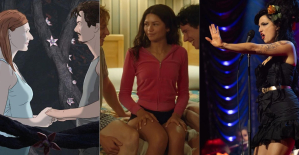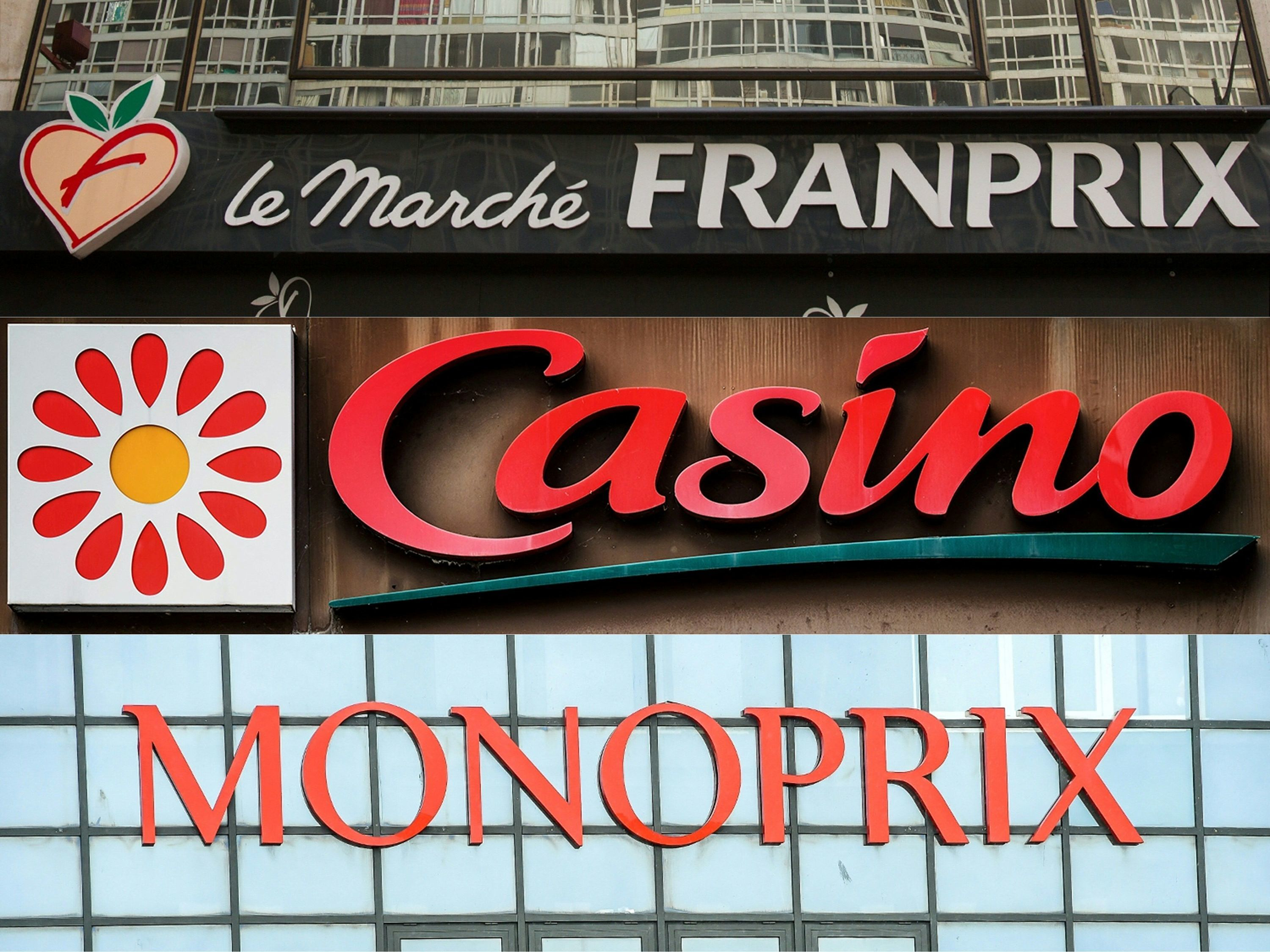Luck, good doctors, a nice man - that's not necessarily what you associate with a so-called sex symbol. And as such, Nadja Tiller was definitely considered. Because she had played "the" in 1958, "The Girl Rosemarie" Nitribitt, Frankfurt's "noble whore" of the up-and-coming Federal Republic, killed just a year earlier. A huge scandal, industrialists were involved, not even the government could prevent the admittedly unrealistic film adaptation - after all, there were fears that the resurgent country would have a bad image abroad.
In the 1996 Bernd Eichinger remake, Nina Hoss undressed. Nadja Tiller, however, posed almost 40 years earlier in a polka dot dress quite frivolously with swinging hips and bleached in front of a luxury car. But Rolf Thiele's skilful social satire wasn't rubbish. By today's standards, the Tiller remains very well-behaved. It didn't do her any harm, despite all the warnings at the time. On the contrary: the kidney-shaped table clinged neatly to her.
Later generations loved Nadja Tiller's early glamour, the cheeky, unprotected, then so rarely sensual. Born in Vienna on March 16, 1929, she later had a very solid career. She actually wanted to be a hairdresser, her grandparents ran the first salon in Gdańsk. Nevertheless, the Italians in particular were crazy about her not only since the Venice success of "The Girl Rosemarie". "The German Loren", they called her.
Nadja Tiller instead of Anouk Aimée, Claudia Cardinale, Monica Vitti - directed by Federico Fellini, Luchino Visconti and Michelangelo Antonioni in "La Dolce Vita", "Rocco and his brothers" and "La Notte"? You have to imagine that: a German as the star of the Italian neo-realists! Could have been, but nothing happened.
“I couldn't speak Italian at the time, so I couldn't bring myself to take on three very interesting roles. It was definitely a mistake, but I'm over it," said a mellow Tiller decades later. Because like so many German film stars that Rome, Paris and Hollywood were calling for, she didn't go at all; others came back quickly and disappointed. Only Romy Schneider became a star with the French, which the Germans took offense at their Sisi.
But Nadja Tiller stayed, shooting in Berlin, Hamburg, Munich – long since a married woman and mother. She, the daughter of a Viennese court actor and an operetta singer: a proud woman. From 1945 she studied at the Max Reinhardt Seminar, in 1949 she became a member of the ensemble at the Theater in der Josefstadt and had her film debut in "Märchen vom Glück". In the same year and again in 1951 she was "Miss Austria". But with principles. Not a femme fatale, as Grandpa's cinema would have liked her - despite the initially rather irrelevant roles in comedies à la "A Great Fruit" or "Love and Trumpet Blowing".
In 1953 she met Walter Giller from Hamburg in the studio. In 1956 they married at the Starnberg registry office - and then went to the cinema, it was "20,000 Leagues Under the Sea". They became a beautiful German cinema couple, she had an aura, he had a wit. But they lived near Lugano – and in the end, very pragmatically, in a Hamburg retirement home, apartment after apartment. The marriage - despite many "side glances" - exemplary; only divorced after 55 years, through Giller's death in 2011.
What could have been a world career remained a typical German film star resume. Nadja Tiller worked internationally in France and Italy for a short time, they liked this German with the meaningful deep gaze.
She starred alongside Jean Paul Belmondo, Jean Marais, Yul Brynner, Vittorio Gassman, Robert Mitchum, Michael Caine ("Alfie"), Rod Steiger, Mario Adorf, O.W. Fischer and Curd Jürgens. Her favorite film was made in 1958 with Jean Gabin: "In the Coat of the Night". Incidentally, in 1963 she once again embodied an enchantingly carefree, ladylike glamorous woman with a convertible in Sweden: Billie in Kurt Hoffmann's film adaptation of Tucholsky, Gripsholm Castle, which is still so summery today.
With Rolf Thiele, the "Rosemarie" director, a total of almost a dozen other projects followed. She was "Lulu" next to Knef, who she didn't like, played the Egyptian Aziza in "El Hakim" and was Thomas Mann's painter Lisaweta Ivanovna in "Tonio Kröger". In "Moral 63" she even managed a brothel in Cologne: Somehow this Nadja Tiller always wanted to shake a little at the moral gates of the economically miraculous post-war society. Gently at least.
120 films came together in this way. From 1967 she was two summers long, an Austrian honor, the paramour in "Jedermann" at the Salzburg Festival. In 1981 she shone, again in Vienna, as Kurt Weill's musical "Lady in the Dark". Even in the touring theater she did not lose her radiance.
Most recently, at the age of 87, Nadja Tiller was on stage as Mrs. Higgins in the musical "My Fair Lady" in Braunschweig. Grand Dame to the end: "I had a lot of fun". Just like life, the film, the man, the family. Now Nadja Tiller has died in Hamburg. She was 93 years old.

 His body naturally produces alcohol, he is acquitted after a drunk driving conviction
His body naturally produces alcohol, he is acquitted after a drunk driving conviction Who is David Pecker, the first key witness in Donald Trump's trial?
Who is David Pecker, the first key witness in Donald Trump's trial? What does the law on the expulsion of migrants to Rwanda adopted by the British Parliament contain?
What does the law on the expulsion of migrants to Rwanda adopted by the British Parliament contain? The shadow of Chinese espionage hangs over Westminster
The shadow of Chinese espionage hangs over Westminster Colorectal cancer: what to watch out for in those under 50
Colorectal cancer: what to watch out for in those under 50 H5N1 virus: traces detected in pasteurized milk in the United States
H5N1 virus: traces detected in pasteurized milk in the United States What High Blood Pressure Does to Your Body (And Why It Should Be Treated)
What High Blood Pressure Does to Your Body (And Why It Should Be Treated) Vaccination in France has progressed in 2023, rejoices Public Health France
Vaccination in France has progressed in 2023, rejoices Public Health France The right deplores a “dismal agreement” on the end of careers at the SNCF
The right deplores a “dismal agreement” on the end of careers at the SNCF The United States pushes TikTok towards the exit
The United States pushes TikTok towards the exit Air traffic controllers strike: 75% of flights canceled at Orly on Thursday, 65% at Roissy and Marseille
Air traffic controllers strike: 75% of flights canceled at Orly on Thursday, 65% at Roissy and Marseille This is what your pay slip could look like tomorrow according to Bruno Le Maire
This is what your pay slip could look like tomorrow according to Bruno Le Maire Sky Dome 2123, Challengers, Back to Black... Films to watch or avoid this week
Sky Dome 2123, Challengers, Back to Black... Films to watch or avoid this week The standoff between the organizers of Vieilles Charrues and the elected officials of Carhaix threatens the festival
The standoff between the organizers of Vieilles Charrues and the elected officials of Carhaix threatens the festival Strasbourg inaugurates a year of celebrations and debates as World Book Capital
Strasbourg inaugurates a year of celebrations and debates as World Book Capital Kendji Girac is “out of the woods” after his gunshot wound to the chest
Kendji Girac is “out of the woods” after his gunshot wound to the chest Skoda Kodiaq 2024: a 'beast' plug-in hybrid SUV
Skoda Kodiaq 2024: a 'beast' plug-in hybrid SUV Tesla launches a new Model Y with 600 km of autonomy at a "more accessible price"
Tesla launches a new Model Y with 600 km of autonomy at a "more accessible price" The 10 best-selling cars in March 2024 in Spain: sales fall due to Easter
The 10 best-selling cars in March 2024 in Spain: sales fall due to Easter A private jet company buys more than 100 flying cars
A private jet company buys more than 100 flying cars This is how housing prices have changed in Spain in the last decade
This is how housing prices have changed in Spain in the last decade The home mortgage firm drops 10% in January and interest soars to 3.46%
The home mortgage firm drops 10% in January and interest soars to 3.46% The jewel of the Rocío de Nagüeles urbanization: a dream villa in Marbella
The jewel of the Rocío de Nagüeles urbanization: a dream villa in Marbella Rental prices grow by 7.3% in February: where does it go up and where does it go down?
Rental prices grow by 7.3% in February: where does it go up and where does it go down? Europeans: “All those who claim that we don’t need Europe are liars”, criticizes Bayrou
Europeans: “All those who claim that we don’t need Europe are liars”, criticizes Bayrou With the promise of a “real burst of authority”, Gabriel Attal provokes the ire of the opposition
With the promise of a “real burst of authority”, Gabriel Attal provokes the ire of the opposition Europeans: the schedule of debates to follow between now and June 9
Europeans: the schedule of debates to follow between now and June 9 Europeans: “In France, there is a left and there is a right,” assures Bellamy
Europeans: “In France, there is a left and there is a right,” assures Bellamy These French cities that will boycott the World Cup in Qatar
These French cities that will boycott the World Cup in Qatar NBA: the Wolves escape against the Suns, Indiana unfolds and the Clippers defeated
NBA: the Wolves escape against the Suns, Indiana unfolds and the Clippers defeated Real Madrid: what position will Mbappé play? The answer is known
Real Madrid: what position will Mbappé play? The answer is known Cycling: Quintana will appear at the Giro
Cycling: Quintana will appear at the Giro Premier League: “The team has given up”, notes Mauricio Pochettino after Arsenal’s card
Premier League: “The team has given up”, notes Mauricio Pochettino after Arsenal’s card


















